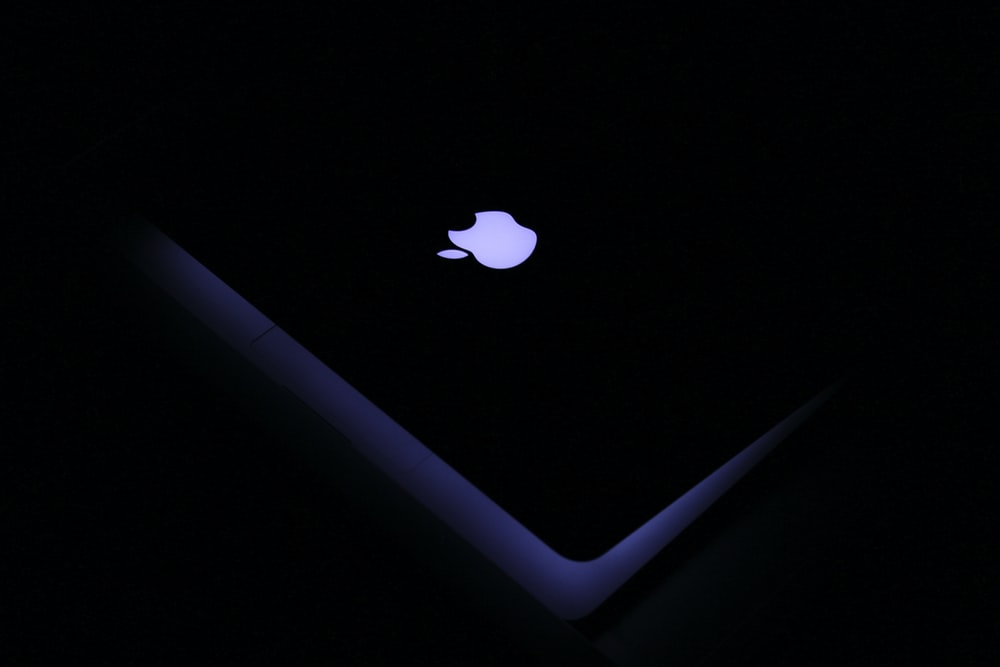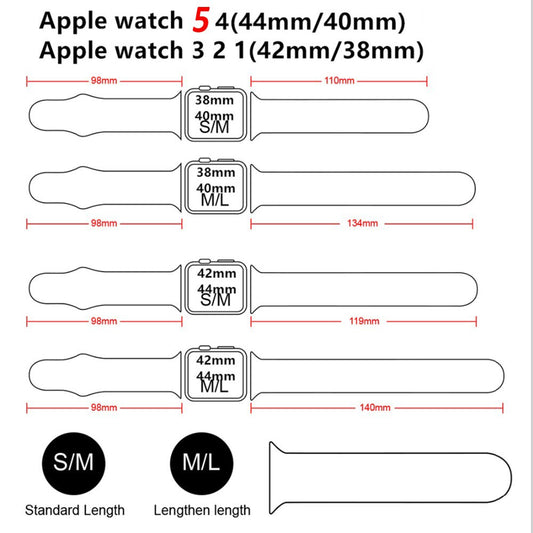Apple has a special way of doing things. They are very organized and structured, which is not the norm for tech companies. But this structure allows them to be innovative by design. Apple has an Innovation Methodology that they follow when developing new products or services. Their process starts with "insight" - where they investigate user needs and develop solutions to address those needs through iterative prototyping (or incremental refinement). The next step in their methodology is "ideation," where ideas are generated from insights either internally or externally, then evaluated for possible solution implementation based on feasibility, desirability and viability criteria set out earlier in the process. Once ideation is completed, it's time for prototyping!
The innovation success of Apple is rooted in the company's organizational design and associated leadership model. The former attributes to its ability for boldness, which has helped drive continuous product updates that create customer demand by releasing new features regularly without fear it will become obsolete quickly.
The latter encourages employees from all ranks stay connected with one another as well as their counterparts at other companies through brainstorming sessions every week where they can share ideas across departments or industries; this leads not only towards better products but also helps decrease employee turnover rates by ensuring people know what’s going on inside a business instead just working blindly day after.

Other than the fact that it was Apple, this is an unconventional company. It had business units with profit and loss responsibilities for each unit manager to accountably run their respective groups in addition to reporting upwards through senior management on how well everything went at quarterly meetings which Jobs always attended up until his return from retirement whereupon he became more hands off but ensured every quarter reported back just as thoroughly about what goes down within these departments so they can make informed decisions moving forward.
As is often the case with decentralized business units, managers were inclined to fight with one another over transfer prices. In his first year returning as CEO of Apple Inc., Steve Jobs laid off all general managers from every division (in a single day) and combined their disparate functional departments into one organization-level structure for better efficiency purposes?
Innovators at heart but also known by many names such as disruptors or insurgents; entrepreneurs have always been needed because there's no other way forward if you want progress without stagnation! It's not surprising that Apple retained their functional structure, even though the company is nearly 40 times as large and far more complex than it was in 1998. What IS remarkable-in fact, perhaps revolutionary—is how they managed to do this with such an organized layout while also retaining some degree of individual growth for each employee; something we see missing from most organizations today!
Apple has no general managers. Instead, the senior vice presidents of this company are in charge and they control every process from product development through sales with just one check - to make sure it makes money! Senior Vice Presidents at Apple oversee both functions as well as products/services; however their sole responsibility falls on making profits for themselves or else risking everything by not achieving target goals set out by CEO Tim Cook (who occupies a unique place within organizational chart).
Business history and organizational theory make the case that as entrepreneurial firms grow large, complex organizations need to shift from a functional organization structure with clear accountability in order for management at all levels—from top down--to align their interests. This prevents congestion which can occur when countless decisions flow up through an org chart toward its very head; it also aids decision making by allowing people who know exactly what's happening on each floor or department be able to take initiative without waiting around for instruction come down only once every few weeks if ever again!
Giving business unit leaders full control over key functions allows them to do what is best for their individual units' customers and maximize profit. As Alfred Chandler documented, companies such as DuPont and General Motors transitioned from a functional structure in the early 20th century with US firms changing up multidivisional models during this period where executives could assess performance more effectively under these circumstances. Sustainability reports should be made available by each division so that managers can see how operations are performing relative within different areas such has marketing or research & development; This way there will always someone accountable when something goes wrong.

In a time where industry is constantly changing and corporations must adapt or die, Apple proves that you don't need to follow the traditional approach. By focusing on function rather than form they have been able not only survive but also thrive as other companies fall by their own accord following conventional wisdom which suggests conglomeration breeds success—a notion proven wrong over twenty years ago when Steve Jobs returned as interim CEO with his "Think Different" campaign slogan in place of bigger isn’t always better.
The Apple Company's commitment to a functional organization does not mean that its structure has remained static. As the importance of artificial intelligence and other new areas have increased, this company has changed with it in order do what is best for their customers going forward by incorporating devices into people’s lives through technology better than ever before!
Innovation benefits aside from simply being productive or profitable include creating jobs as well as making society more efficient which opens up room at all levels including leadership opportunities where employees can make decisions faster without worrying how those around them feel about certain topics because they know exactly who should be involved based on expertise alone - just ask Siri.
A Functional Organization.
Apple has always been about more than just making products, it's an extension of the company’s mission to create enriching experiences for its customers. This includes developing entirely new product categories such as smartphones and watches while also innovating within them with features like Siri or Health Kit.
Steve Jobs gave only six seconds of his annual keynote event to talk about the phone's new camera feature in 2007, but he certainly didn't skimp on innovation. The first iPhone featured high dynamic range imaging (HDR) technology which allowed photos taken at different exposures levels to be blended together seamlessly into one image with mixed-light sources visible as shadows and highlights alike - it was a game changer for photography! He went onto other things like panorama shots that were released just two years after its introduction . And now there are all these even newer innovations too: True Tone flash came out back when they still had those goofy little incandescent bulbs lighting up our homes; Optical Image Stabilization means you'll never shake your handheld shot again. High dynamic range imaging (2010), panorama photos(2012) True Tone flash (2013), optical image stabilization , dual lens sensors & face detection in 2016); portrait mode came later still but has been key for taking great selfies ever since 2017 when they added ‘night’.
Leadership with Deep expertise, immersion in details, and collaborative debate.
Apple's belief is that those with more expertise should have decision rights. It doesn't matter what domain you're talking about, it centers on functional expertise for Apple because they feel confident in their ability to understand future technology disruptions better than anyone else does and this philosophy has helped them create new innovations like Siri which was largely based off Face ID tech developed by Stanford University students without any input from Steve Jobs or other executives at the company!
The future of a company hinges on the decisions made today. Making bets about which technologies and designs will succeed in smartphones, computers etc., relying instead on technical experts rather than general managers increases your odds at investing wisely while also giving you peace of mind that any decision made is sound. Apple’s commitment to offer the best possible products would be undercut if short-term profit and cost targets were their only criteria for judging investments, leaders or decisions. Senior executives in research & development are paid based on companywide performance numbers rather than how much it costs them specifically with regards towards producing certain products; incentives like these help ensure that Apple continues bringing creative solutions forward instead of solely focusing on financial returns from each individual project - because at this point we know what those will look like!.
Engineering teams are insulated from short-term financial pressures by being excused the product road map meetings, while finance is kept at arm's length out of pricing decision's. Apple's approach to R&D is unlike what you would expect from a company with typical goals. Rather than considering just the financial aspect, cost and price are weighed against benefits for users in order to make design decisions that will best meet those needs. The team at Apple spends time thinking about how technology can be improved while keeping prices low or even decreasing them over time by releasing new products on existing platforms instead of creating entirely different ones when possible.
In a functional organization, individuals and teams rely on reputation to gamble. There is an example in which the company bet that their dual-lens camera with portrait mode would be sufficiently great for users of iphone 7 plus 2016 edition when introduced at significant cost. One executive told us that Paul Hubel, a senior leader who played an integral part in the portrait mode effort was “out over his skis." This meant he and his team were taking on quite the risk: if users weren't willing pay for something more expensive with better quality than what they had before then maybe these guys won’t have as much credibility when we propose other pricey upgrades or features again. The camera on the iPhone 7 Plus is a major selling point, and its success increased Hubel's team's reputation even more.
Leadership Characteristics.
The way Apple runs its business has been widely studied and there are three main characteristics that every manager needs. The first one is deep expertise, which means you need to be an expert in your field of work; the second requirement for this job position entails immersion into details - know everything about it from start-to-finish because if not then who will? Finally we come across collaborative decision making where everyone involved gets together so they can discuss possible solutions or outcomes before decisions get made as a group rather than just one person’s opinion leading them down whatever path he/she wants. When leaders have these qualities, they are able to make decisions in a coordinated fashion with the people most qualified.
Deep expertise.
At Apple, general managers are not in charge of managing other employees. Instead, experts lead those who have been designated as such and each expert has his or her own set skills to manage correctly. The company follows this principle because it's believed that if someone specializes enough then the task becomes much easier than trying teach somebody else how you do your job well when there is no specific training required for being an "expert" at anything!

As any sports fan knows, being on a team with players from different areas is what makes them so impressive. In this sense Apple's leadership believes the same thing about their workers - they want to be able learn and play alongside those who have achieved success in other fields or following different paths than your own specialty can offer you as much insight and inspiration for future work."
In a functional organization, experts leading each other means that specialists are able to share knowledge and learn from one another. For example Steve Jobs would never have been successful in his leadership if he didn't have cameras expertise because all iPhones include these components while working with Graham Townsend who leads more than 600 camera-related employees at Apple into group efforts across product lines without having them scattered across different departments or business units where they can easily get lost among others' work responsibilities within companies. That would dilute their collective expertise, reducing their power to solve problems and generate and refine innovations.
Immersion in the details.
Apple's corporate philosophy is built on a simple idea: People who know more about their organization have the power to make better decisions. Leaders should be held accountable for knowing how things work at all levels of an enterprise, from top executives down through every worker in a company. As Jobs himself said "When you understand what makes something work then it becomes much easier to solve problems."
The best stories involve people. Managers tell war tales about making presentations to senior leaders who drill down into cells on a spreadsheet, lines of code or test results for products and services they are developing with you - all while trying not make them feel like prey in front an agile killing machine!
Leaders who know the details of their area can go deep into them and focus on what is important. They also have a profound impact for how Apple operates, as they push their teams to improve through scrutiny or other methods such as coaching employees in difficult situations that arise with thoroughness. The leaders' expertise affects not just themselves but those around them because it helps everyone work more efficiently together at all levels.
It is not surprising that any people at Apple see it as liberating, even exhilarating to work for experts. After all, the general manager can only provide guidance and mentoring within his/her area of expertise so much; together with others in this environment who share similar goals but go about achieving them differently than oneself leads everyone toward greater success!
Willingness to collaboratively debate.
For any new product, Apple has dozens of teams working on their component. Sometimes this means the collaboration among more than one department is required for a single key feature or function; other times it can come down to just one team in particular - like camera hardware specialists who specialize in creating portraits mode using dual lenses with special algorithms that produce natural-looking photos even when you're moving around quickly. This passage discusses how many people are needed throughout apple's company within different departments collaborating together during development stages so they all have access information necessary before coding begins.
Collaborative debate is crucial for the coordination of Apple's products. No function can carry out its own responsibility alone, so collaboration across different departments and groups within a company alike are required to bring this project together successfully.
The camera project was a test of accountability without control. The entire team had to work together in order for it succeed, and even though one person is ultimately responsible (Townsend), he couldn’t make things happen by himself! The teams that worked on this project had a shared purpose and the end result was great. However, if you include portrait mode then it becomes more of an experiment with some successes but lots of failures too because people were pushing their own agendas ahead of common goals rather than working together towards what they should have been looking for in order produce good messes.
Leadership at Scale
Apple’s way of organizing has led to tremendous innovation and success over the past two decades. Yet it has not been without challenges, especially with revenues exploding since 2008 when Apple introduced its famous retail stores as well as online shopping platforms for both consumers and businesses who want access on their smart devices at any time or place that works best for them
Whereas Apple's VPs spend most of their time in the owning and learning boxes, general managers at other companies tend to be more evenly distributed between these three areas. According to Rosner’s research on how executives use their working hours for different purposes (based off interviews with 60+ business leaders), he found that about 40-50% are spent doing activities they own while 30-45 go towards gaining knowledge through collaboration or teaching others what you know; 15%-20 percent is then allocated out as delegating tasks which allows them flexibility when moving around within an organization rather than staying put at one location all day long. The numbers vary for each manager, of course depending on their business and needs at that time.
In a world where functional organizations are necessary to execute at scale, Apple has found success by following this model. The leadership team is able retain the expertise and decision rights that come with their separate departments while also being nimble enough for new areas outside those fields of knowledge or utilizing other strategies as they see fit - all through preserving fundamental principles like alignment between leaders' powers and duties within an organization's needs
It seems intuitively logical when you think about it: what good can possibly come from combining two things so different? Yet somehow—despite its seeming counterintuitive qualities--this approach not only works but results in greater overall productivity than any other conventional. Apple has always been seen as a company that thrives on innovation and creativity. It's no surprise then, with all their organized systems in place, they will continue to innovate for years to come!
Apple’s functional organization is rare, and it flies in the face of prevailing management theory that companies should be reorganized into divisions and business units as they become large. But something vital gets lost when you shift to this type of structure: alignment with decision rights on expertise matters more than ever before!
Why do companies so often cling to having general managers in charge of business units? One reason, we believe, is that making the change can be difficult. It entails overcoming inertia and reallocating power among managers who have been conditioned for individual achievement at any price - which makes them resistant when you try changing things up because their livelihoods depend on it; yet an alternative incentive system must ultimately take place if your employees are going through such massive external challenges like ours does without proper support or resources from management (which would then leave more room for problems). As daunting as these changes may seem now: nothing could go wrong!

The Apple approach to leadership has been a successful one, and its track record proves that risk-taking can produce extraordinary results. The company's general managers have often come from an area of deep expertise in order to fill their next senior management role early on when transitioning into functional organizations instead of being stuck within business units structures which might not suit all employees well or even be effective anymore with how quickly technology changes these days!
Follow us for more information and updates, wristwatchstraps.








